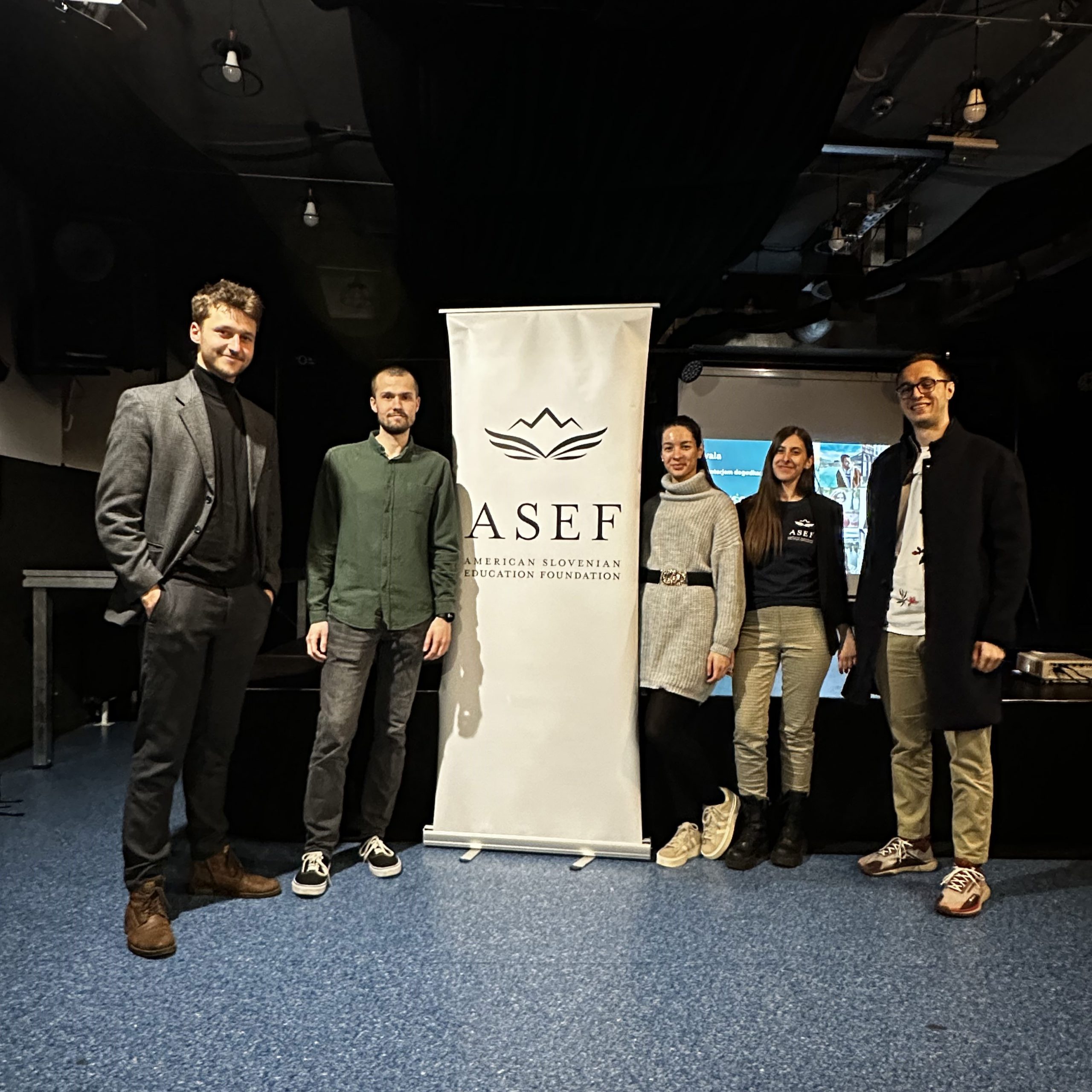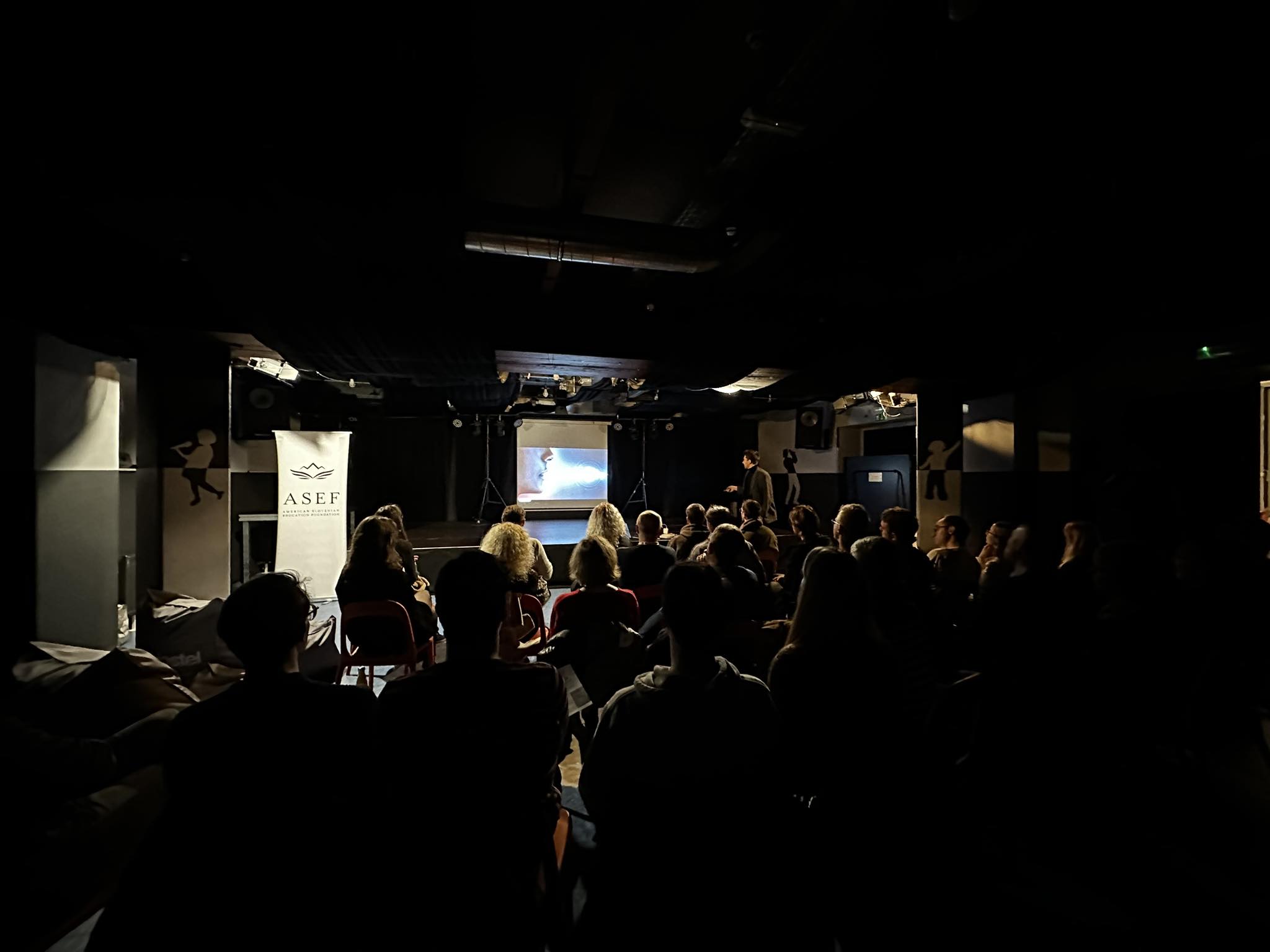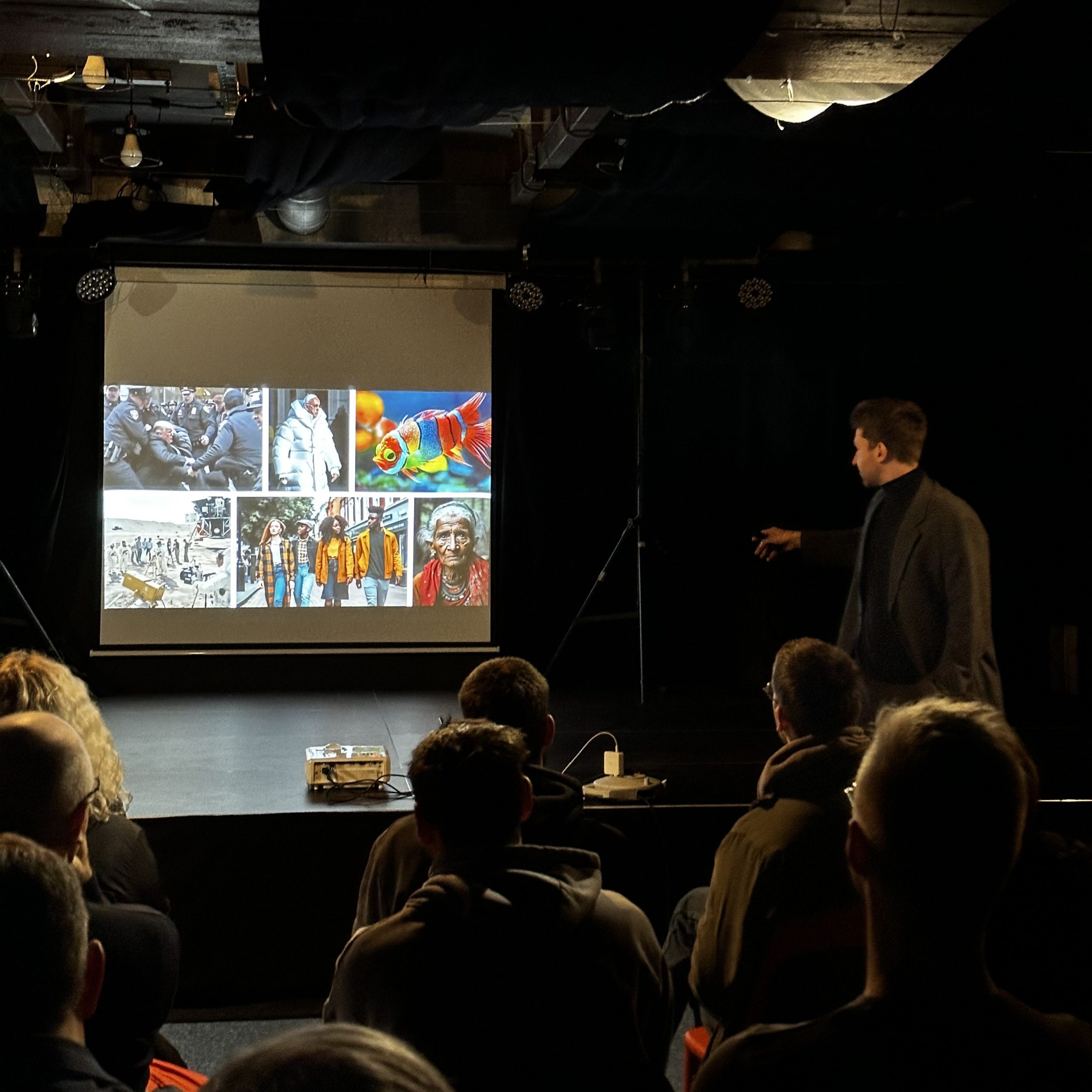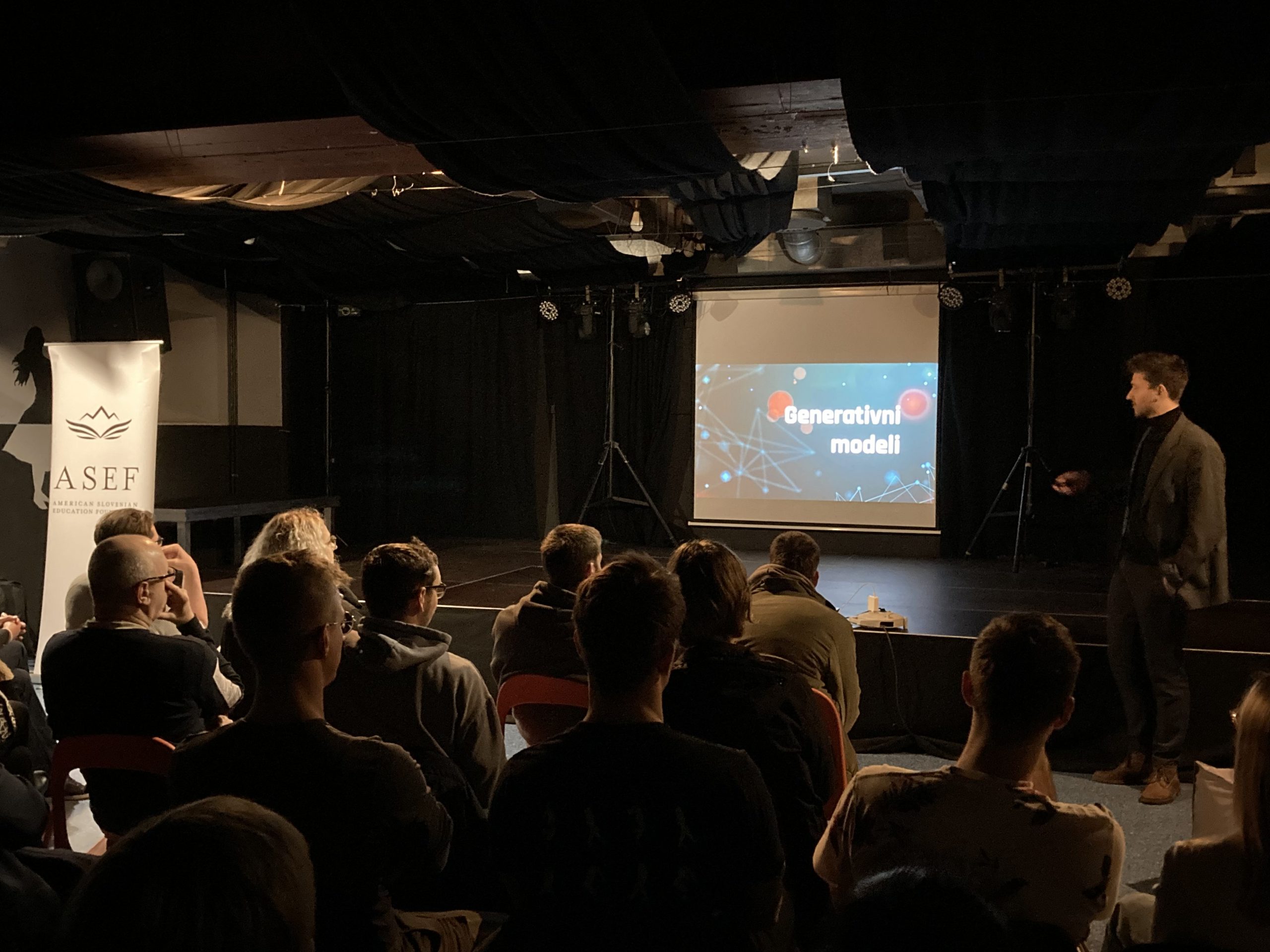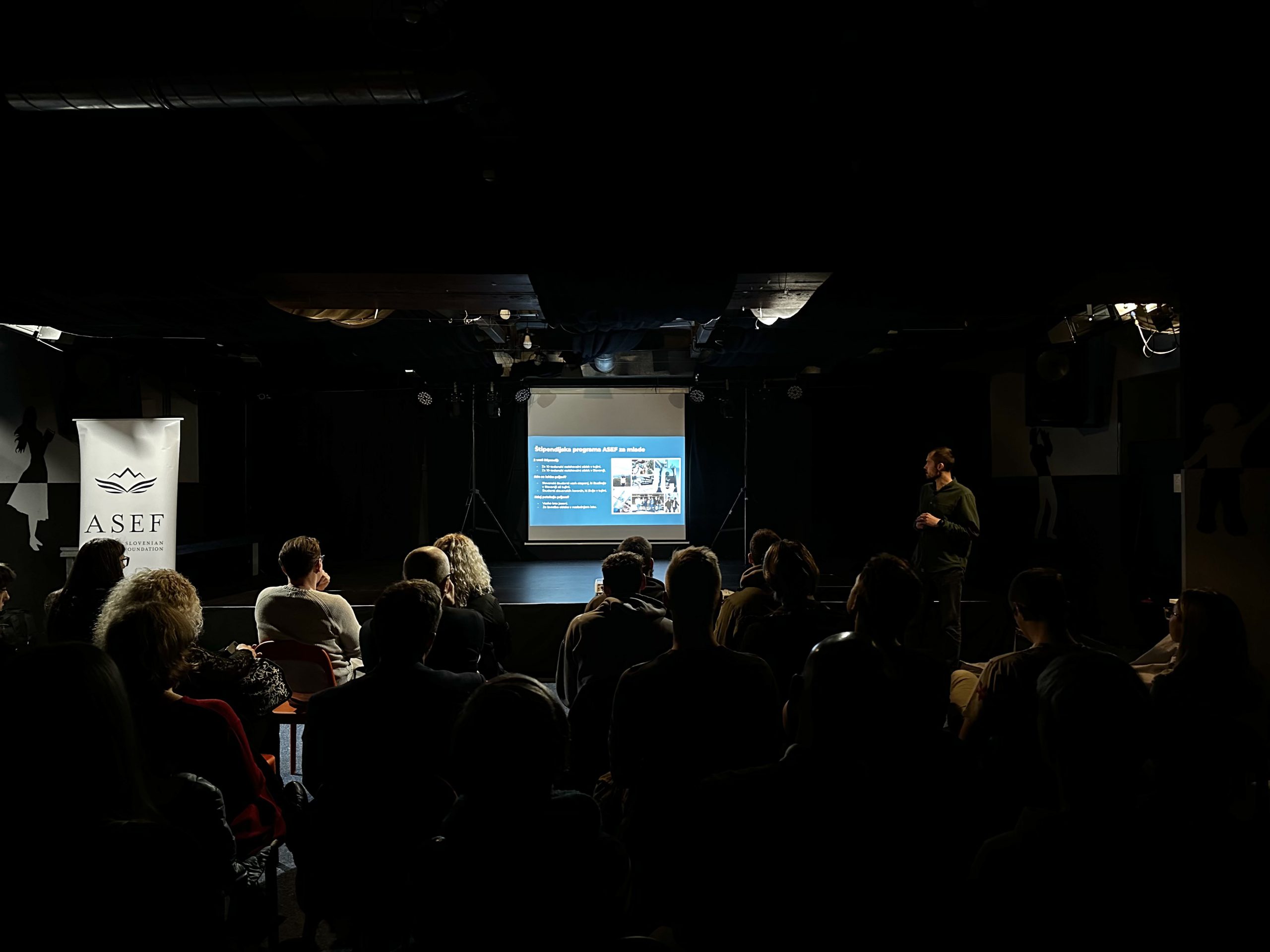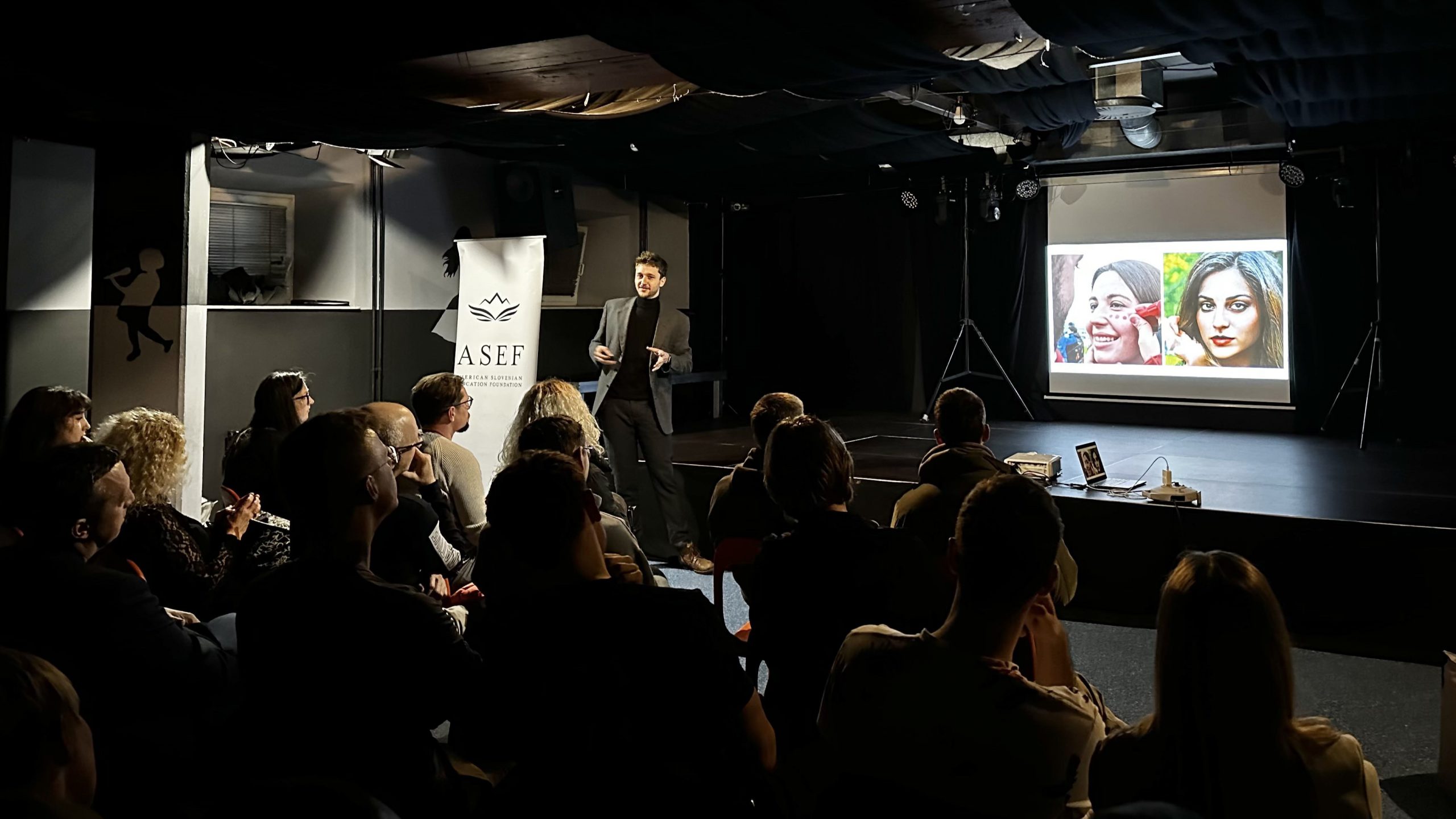
Frenk Dragar: Detection and Watermarking of AI-generated Content
On Thursday, 28 March, ASEF, in cooperation with the Celje Students’ Club (KŠOC), organized a popular science lecture on Thursday, March 28, at the Celje Youth Centre as part of the ASEF Young Minds lecture series. The lecture was given by Frenk Dragar, ASEF Junior Fellow 2023, a graduate of Computer Science and Mathematics at the University of Ljubljana and a Master’s student in Artificial Intelligence at the University of Utrecht.
Frenk first introduced us to the current issue of AI content fraud. This can be pictorial, such as photos of famous people in suspicious situations, or audio, such as phone calls, which resulted in over $11 million being stolen in 2022. What is particularly compelling is the combination of the two that appears in Zoom video conferences. Generated texts are also problematic: homework assignments, comments on online platforms, blogs, product reviews, marketing messages, etc.
What can we do to detect identity theft and the spread of misinformation more quickly? With this clue, we set out to explain in more detail how generative AI models work and how we can tell what content they have created. We learned about training generative models at the level of text, images, sound or voice, generative adversarial networks, detection methods and content watermarking methods. Last but not least, we focused on invisible watermarking, which is the newest method in the field. The important advantages of this method are that no signal is needed to read the information, the mark is undetectable and resistant to manipulation of the content (e.g. cropping the image, adding noise, etc.), and it allows for high accuracy and specificity of detection.
To conclude, we discussed the delicate and important decisions on the regulation of watermarking methods and looked to the likely future. The lecturer believes that the generation of AI content is impossible to stop; he sees the use of AI tools in the future as a tool that could be compared to the use of a calculator.
During his research visit to the University of California Berkeley in the autumn of 2023, the lecturer worked with Professor Dr. Gašper Beguš on watermarking generative models, in the field of sound. He is currently researching the watermarking of generated texts for his Master’s thesis in the Netherlands. We were eager to hear about his experience of research and life in California. And inspired by his adventures on the road, learning about the culture and the amazing people he spent time with during his research visit.
The event was coordinated by Vid Keršič, an ASEF Junior Fellow, generation 2021.
The ASEF Young Minds project is supported by the Office of the Republic of Slovenia for Youth and the Government Office for Slovenians Abroad.


